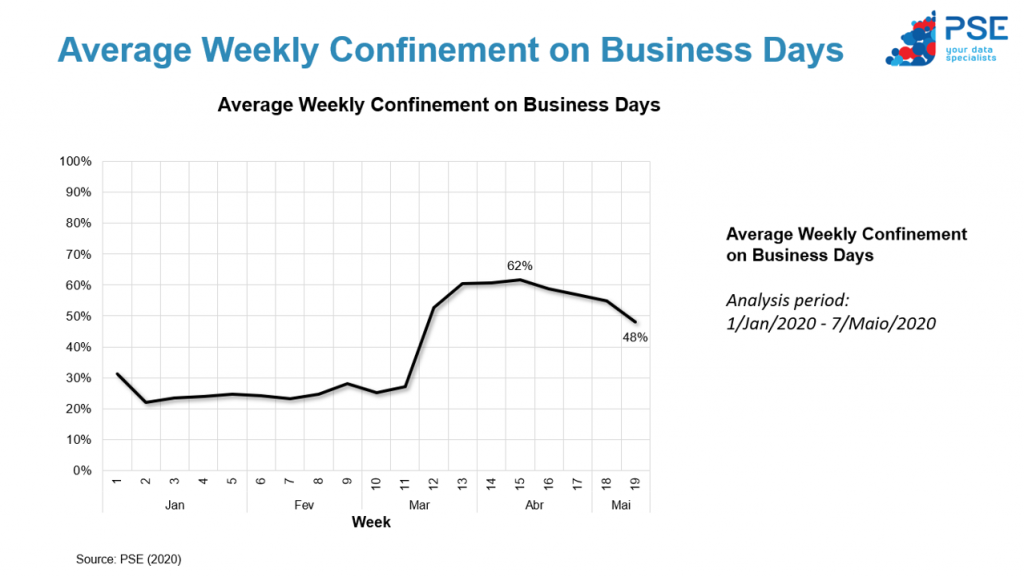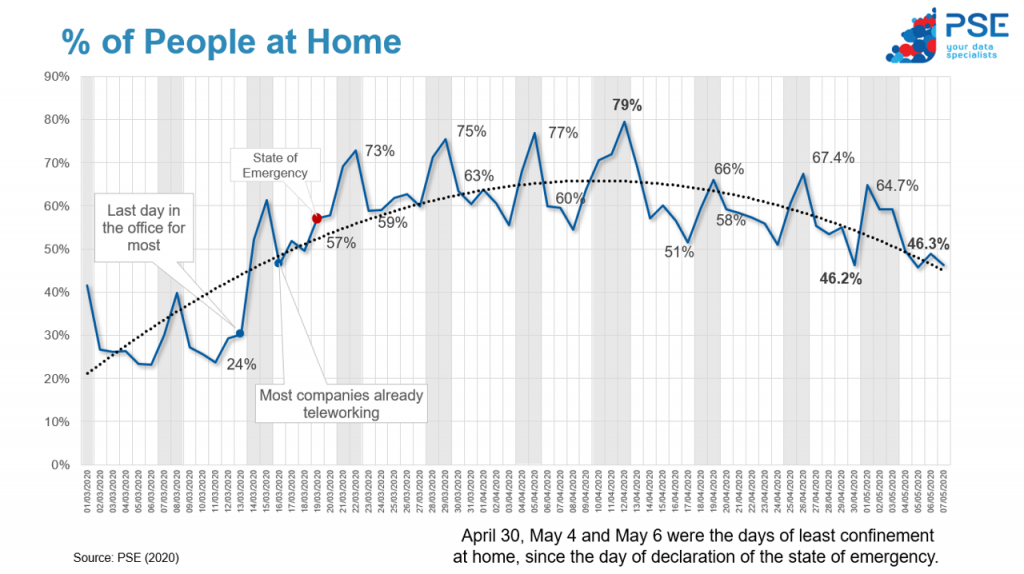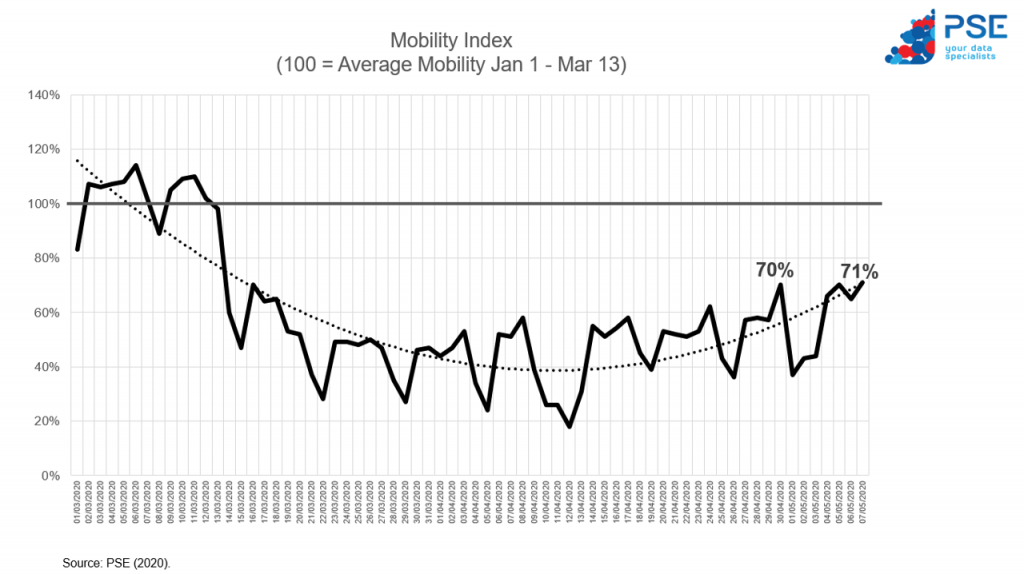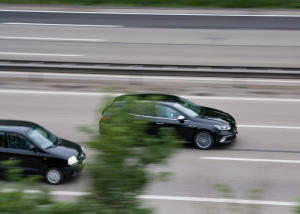IN THE LAST 4 BUSINESS DAYS, 77% OF PORTUGUESE WENT OUT TO THE STREET AT LEAST ONCE.
AVERAGE DAILY CONFINMENT WAS 48% IN THESE FOUR DAYS. TREND IS INCREASING MOBILITY. BUT “DEFINING” IS BEING MADE SOFTLY.
The consultancy PSE studies the mobility of the Portuguese, continuously. This study is a panel that implies an APP installed on the mobile phones of the participating sample. Thus, the actual displacement of the population is monitored 24 hours a day. This study is highly rigorous because it records the location via GPS and concomitantly because it is based on a statistically representative sample of the universe under study. Technical note at the end.
Considering the last 4 working days, the average daily confinement at home was 48%. Still far from the values before the pandemic, which are 25% to 20% per day. That is, on average, 52% of the Portuguese left home each day on each day. But as, on different days, different people also leave, 77% of the Portuguese went out on the street, at least once, in these 4 days.

Confinement at home, measured on a weekly average of working days, peaked at 62% in Easter week. And this week has the lowest average value, with 48% at home, in these four days. This means that about 52% left home each day.
Daily Values:
The working days of May 8 (46.3%), May 6 (45.7%) and April 30 (46.2%) were the working days with less Confinement at Home since the day of declaration of state of emergency. The clear tendency is for deflation on both working days and weekends, but in a mild way, for now.
But as we stay more at home at the weekend than on weekdays, the practical result is that mobility is greater on weekdays. What we have been observing in these values, daily, where we see that most Portuguese go out on the street, each day:

The Total Confinement of the Portuguese, at home, can be decomposed between what is the Natural Confinement (who usually does not leave the house) and the Additional Confinement, made by the people who usually leave the house, but who are now at home.
As a rule, confinement at home is always greater on weekends than on working days.
This trend of lack of definition, which we are seeing, had the effect of increasing the MOBILITY INDEX in the last working days, as can be seen in the following graph.

Mobility in the last two business days has already been around 70% of pre-pandemic “normal” mobility. Once again, we conclude that there is a smooth evolution of increased mobility, which until now has been done in a controlled and smooth manner.
PSE CONTACT:
NOTE:
This study has produced, since 2019, data that are applied, above all, in gauging the audience of outdoor advertising, but also to assist city councils in spatial planning and in the management of mobility and transport. And also in behavioural studies of mobility and “shopper”, for other companies and entities.
TECHNICAL NOTE:
This study is the PSE panel, with continuous data collection through location monitoring and means of travel via mobile application of a panel of representative individuals from the Universe over 15 years old, residing in the regions of Greater Porto, Grande Lisbon, North Coast, Central Coast and Faro District. This study implies an APP installed on the mobile phones of the participating sample. So we monitor the actual displacement of the population, at each hour of the day. This study is carried out 24 hours a day. The data are obtained rigorously, via GPS and with the consent of the monitored sample. For a universe of 6,996,113 individuals residing in the regions studied, the margin of error attributable to the study is 1.62% for a 95% confidence interval.




